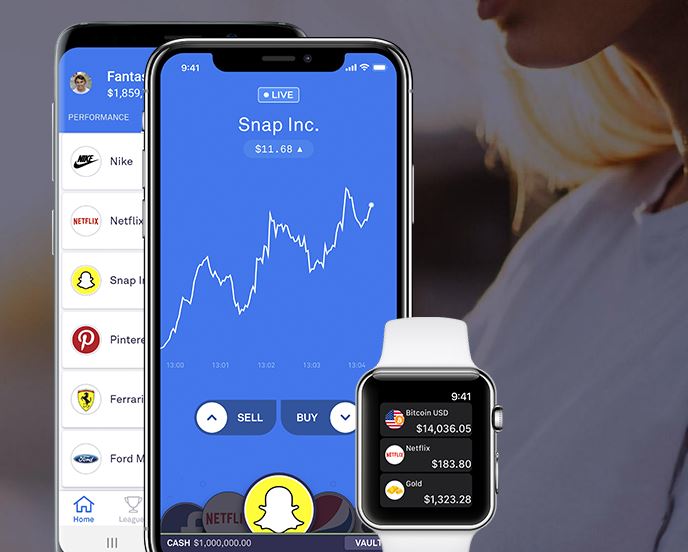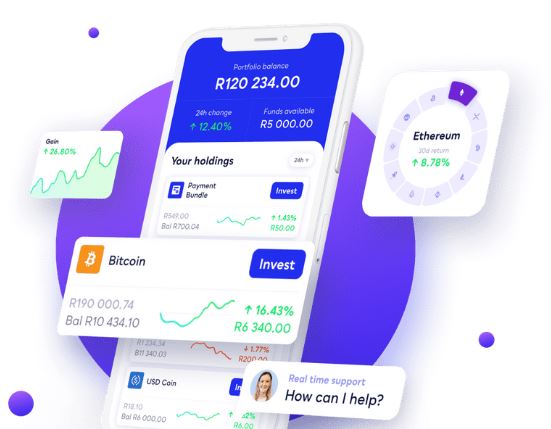Stock trading apps are booming, but what about the education gap?
Stock trading apps are having one of their best years to date. US fintech Robinhood made $60 million in March, triple what it made in March 2019.
Aussie trading app Stake saw its March volumes jump up nine times what they were in December 2019. And in April, Canada’s Wealthsimple Trade acquired on average 7,000 new users per week – some of its fastest growth on record.

Are fintechs just “paying lip service” to education?
But whilst stock trading apps climb to heady heights – both in trading volumes and institutional investments – the gap in education for young users powering these services is ever-widening.
Lives at stake
In June, Robinhood trader Alexander Kearns took his own life after thinking he was in $730,165 of debt. Since this tragedy, many have brought into question the role fintechs must play in educating their investors.
In a note before he died, Kearns wrote: “How was a 20-year-old with no income able to get assigned almost a million dollars-worth of leverage?”
Whilst details of his account have not been released, Forbes speculated that Kearns was trading “a bull put spread”. This would explain why an unexpectedly large stock position crept up in his portfolio.
A bull put spread is an options trading strategy. Whilst options and margin trading are riskier bets for investors – particularly novices – these sorts of trades ultimately make more money for the trading apps which host them.
Are fintechs just “paying lip service” to education?
“If you want to destroy emotional and human capital, you focus on options and margin trading,” CEO of Invstr, Kerim Derhalli, tells FinTech Futures.
“This mentality is doing consumers and the industry a fundamental disservice, fintech should be better than that.”
Derhalli, who was a banker at the likes of JPMorgan and Deutsche Bank for almost three decades, thinks some fintechs are simply doing what big financial firms have done for centuries: taking from the poor, and giving to the rich.
Unlike stock trading apps with millions of users to their name, Invstr, which has around 900,000 installs, has geared its offering towards education-focused trading and investing.
This model is neither making the start-up the most money, nor driving customer acquisition. But it is breeding a generation of users who know what they’re doing.

“Our educational tools aren’t just paying lip service with the odd blog post,” says Invstr’s CEO
Not only does Invstr cap the number of trades users can do each day, it also makes sure any one investment is diversified by at least 2.5%, and up to 30%.
“And our educational tools aren’t just paying lip service with the odd blog post,” Derhalli adds. “It’s a syllabus, 1-85 lessons, bitesize, and you get a quiz at the end of each module – of which there are ten.”
Derhalli describes his team, which carries decades of experience, “the most unhip fintech out there”. “We didn’t come out of Stanford pretending to be experts,” he adds.
Robinhood has a ‘Learn’ tab on its website where users can read its blog content.
The fintech has posted around 23 articles this month. These have headlines such as ‘I’m in my 20s – how should I approach investing?’, as well as more complex definition-based articles.
This is undeniably a lot of content, and it is presented in an easy-to-understand way. But how many users know it’s there? And how many follow the advice when they have full reign to do anything regardless?
Building in controls of number of trades, whilst it risks hampering your profits, is a full-proof way of ensuring users don’t use your platform like a gambling service.
Structuring education into the platform
Sean Andrew Sanders, co-founder of cryptocurrency trading platform Revix, tells FinTech Futures it “should be a requirement to educate customers”.
“It’s all in the way you build a platform – if you build one to be traded on all the time, then users will trade five, six, seven times a day. So, you’re therefore incentivising the wrong behaviour.”
Sanders thinks the slippage certain trades can experience is not communicated enough. In South Africa, where Revix was founded, penny stocks can have a 20%-50% move in just one day, which can lead to big slippages.
“The biggest problem with some trading platforms is that they’re allowing users to rack up loss after loss,” says Sanders.
Revix is currently in the process of transferring to a thematic-based trading approach. It thinks this will attract more female investors, as well as better educate its users as a whole.

In crypto, investors expect to make large, quick returns
The start-up’s customer base is 40% women, and 60% men, with the higher churn rate belonging to men.
Revix is also looking at more longer-term investment options. These generally attract more women than men, who are more active, day-to-day investors. “I think that’s got something to do with our overconfidence,” Sanders laughs.
Particularly in crypto, investors expect to make large, quick returns. So, it’s the responsibility of fintechs like Revix to set these expectations.
“There are big blow ups in crypto which reach bubble status and then pop,” says Sanders. “It’s important to address these.”
Complex trades without collateral
Robinhood, in its most basic form, offered users a cheap way to buy individual shares and come up with a buy or share strategy.
But Mike Taaffe, a Florida-based attorney who is part of the California case against Robinhood for its three outages in March, tells FinTech Futures that it’s gone a lot further than that now.
Taaffe has spoken to at least 20 Robinhood users so far about their experience with the app. “It allows you to put your entire net worth on there, when really it’s a lot of young, unsophisticated investors who don’t know what they’re doing.”
Banks must carry a certain amount of collateral. This helps them to do more complex trades which could result in them spending more than they have. Investors on platforms like Robinhood must state their experience level upon sign-up, but aren’t required to hold relevant collateral.
Collateral can be any number of things – cash, high-grade securities, government bonds, or gold – depending on the trade.
For riskier plays such as margin trading, Robinhood offers users a credit card which gives them the margin they need to make the trade.
There is no industry standard for fintechs which have grown beyond cheap individual share buying. This is perhaps why students like Kearns can slip through the cracks.
If regulations did come into play requiring authors of certain trades to have collateral, no doubt platforms like eToro and Robinhood would be hit with significant losses.

Will these stock trading apps face acquisition?
Taaffe says his brother, an equity derivatives trader on Wall Street, is doing the same trades as young individuals are doing on these stock trading platforms. “People don’t know how much risk they’re taking.”
David Myers, a partner at Deloitte, likens the regulation gap between fintechs and incumbents to holding a driving licence and respecting highway codes.
“You can’t shirt that responsibility, everyone is accountable to the same duty of care.”
Will these stock trading apps face acquisition?
Many in the industry have drawn parallels between fintechs and the incumbents.
Particularly in the stock trading space, as Taaffe says, young trading app users are doing similarly complex trades to those happening between the world’s largest banks.
Myers says companies are facing more regulation. This has resulted in a tendency for them to get bought up because of the expenses regulated activities incurs.
He likens the landscape to that of the exchanges. He was working at incumbent exchanges across Europe and the US when there were brand new players competing against the Nasdaqs and NYSEs.
“Part of it was that they were offering a competitive alternative,” says Myers. “But the service was still similar, except it rested on newer tech and didn’t have to follow the same rules.”
Over time, exchanges rallied regulators to put firmer regulations in place to curb the freedom of market disruptors. This then led to these disruptors selling up to incumbents.
We’ve already started to see consolidation in the stock trading app space. In February, Morgan Stanley bought E-Trade for $13 billion.
Ulitimately, Myers believes that the most successful start-ups “want to make things better, and don’t want to make money”. “Typically, that flips, then they make money.”
Read more: Morgan Stanley to buy E-Trade for $13bn in bid to tap online traders











































